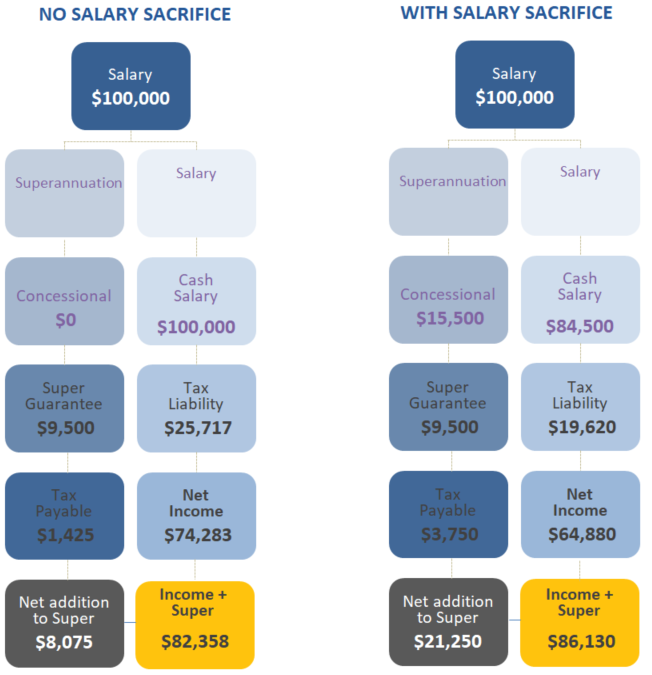Would you like more flexibility with your superannuation but don’t have the option to salary sacrifice? You can now claim a tax deduction on your personal contributions. SMSF expert Bob Locke explains.
How much can you contribute?
Under the current rules, the maximum amount of “concessional” superannuation contributions that can be claimed as a tax deduction is $25,000.00 per person per annum. This is referred to as the “Concessional Contributions Cap”. This amount includes any super contributions paid by your employer; salary sacrifice contributions plus any other tax-deductible personal contributions you make to your super account.
On the other hand a “non-concessional” contribution is a payment made to superannuation after tax. It can be from a range of sources such as an inheritance, additional payment from your after-tax salary, property sale etc. The usual cap on non-concessional contributions is $100,000 per financial year.
Salary sacrifice vs PersonalContributions
Until 30 June 2017, only the self-employed, retirees or those who earned less than 10% of their income as an employee, could claim a tax deduction on a personal contribution.
This restriction meant that many employed individuals could not make deductible personal contributions to reduce their taxable incomes. The only way to maximize their total concessional contributions cap was to make arrangements with their employer for a salary sacrifice arrangement where they would reduce their gross salary in favour of the employer making a larger contribution (above the normal 9.5% of salary) to the employee’s super fund.
Now there’s an opportunity to give your super investment a boost and reduce your tax bill at the same time. With the changes effective from 1 July 2017, employees can make additional personal contributions and claim a tax deduction for the additional contributions, thus putting them on the same footing as self-employed people.
But how is that different from a salary sacrifice arrangement you may ask. Though salary sacrifice arrangements provide the same benefits one may not always be able to make such arrangements with their employer.
Compared to regular salary sacrifice contributions which can only be made prospectively a personal deductible contribution means you can make one lump sum contribution towards the end of the financial year. The additional flexibility of this system may be helpful in several different scenarios.
Take Mary’s case for instance. Mary works as a specialist teacher earning $110,000 annually. She has had an investment property for many years that she decides to sell in preparation for her impending planned retirement. On speaking to her accountant Mary finds out that based on the estimated sale price, there will be a taxable capital gain of $100,000 on the sale of the property which will cost her almost $45,000 in additional tax. She decides to make an additional contribution to superannuation of $14,500 and as a result, reduces her tax bill by around $7,000. Although Mary’s super fund will have to pay tax of $2,175 (15% of 14,500) on the additional contribution, she is still almost $5,000 better off.
Or take the case of Joe who is employed as a builder and earns $60,000 pa. In May, Joe receives a bequest of $25,000 from the estate of a recently deceased relative. He would like to retain around $6,000 of the money to take the family on a holiday trip and save the balance of $19,000. After talking to his financial adviser, Joe decides to contribute the full $25,000 to his existing superannuation fund; $19,000 is claimed as a concessional contribution and $6,000 as a non-concessional contribution.
As a result of claiming the additional contribution, Joe receives an additional tax refund of $6,800, which he uses for the family holiday. After allowing for the additional tax in the super fund on the concessional contribution of $2,850 (i.e. 15% of $19,000), Joe has increased his net savings by $3,150 and also has an additional $800 spending money for the holiday!
Super contributions over 65
Turning 65 years of age is a life milestone, but unfortunately, it does make putting money into your super a bit more difficult.
If you are over 65 you will need to pass the “work test” to continue making contributions – this means you will need to have worked a minimum of 40 hours in any 30-consecutive day period during the financial year.
Also, just like salary sacrifice superannuation contributions, Centrelink adds back any personal concessional contributions claimed when assessing entitlements that are subject to the “income test”.
Note that this age limit is proposed to increased to 67 from 01/07/2020.
Making extra contributions to your super
If you would like to make extra contributions to your superannuation, you can do it using either ‘before-tax’ or ‘after-tax’ money, keeping in mind that there are annual limits (caps) on how much you can contribute to superannuation.
Consider your financial situation and decide whether making extra super contributions is right for you across the short and long term.
Bob Locke – Chartered Accountant & SMSF Specialist











